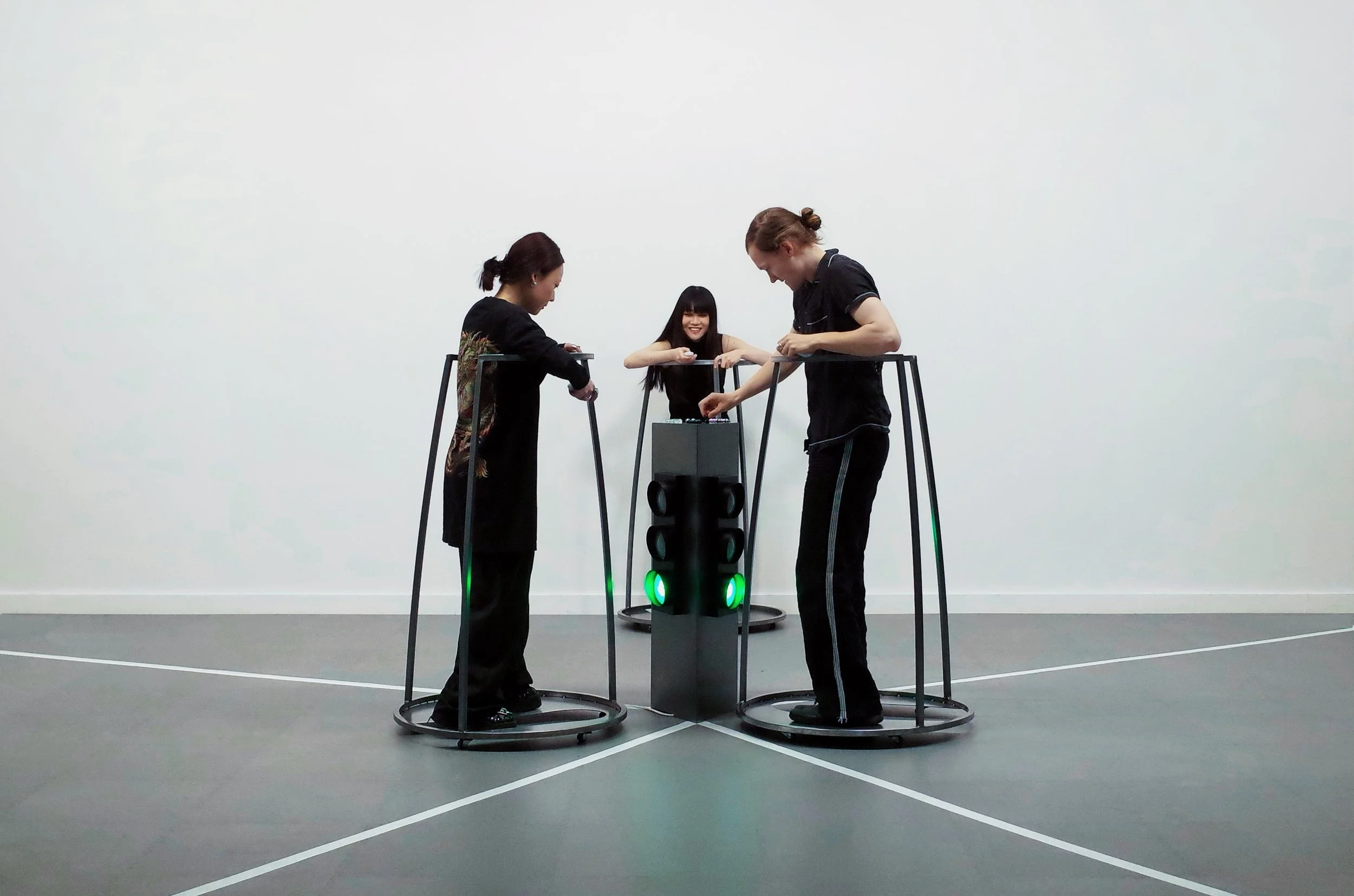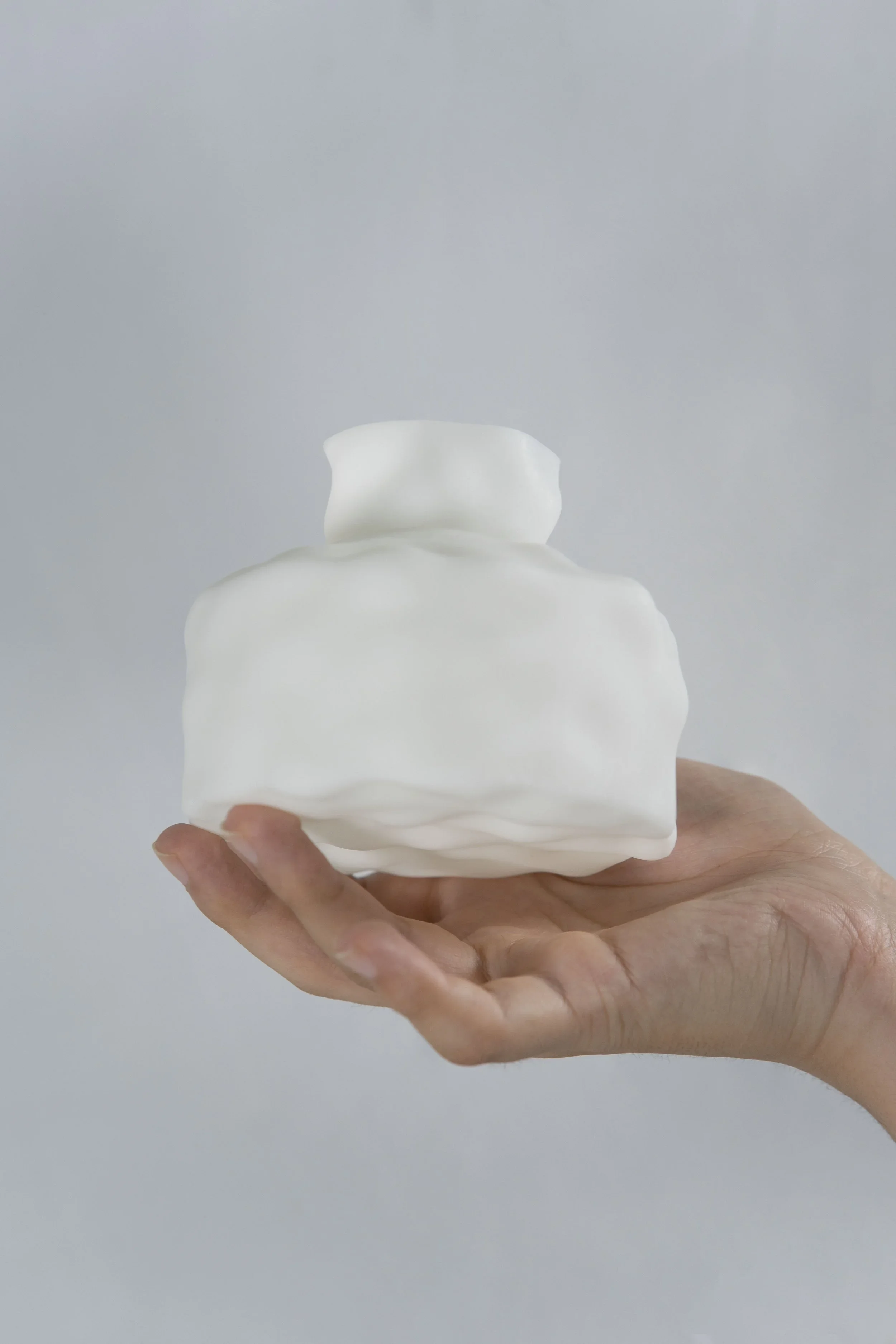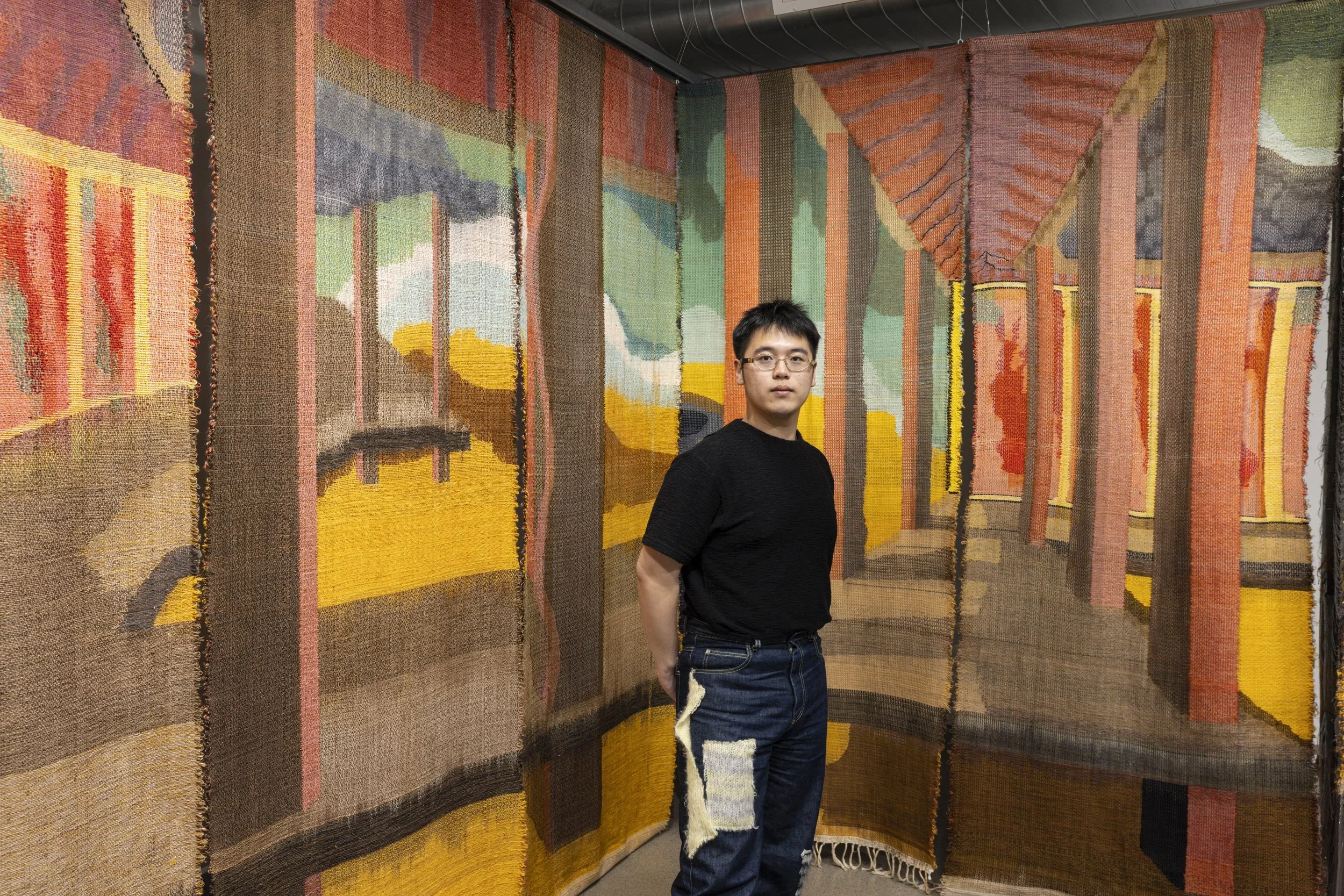10 Questions with Milena Jovicevic
Milena Jovićević was born in Cetinje (Montenegro) in 1976. She graduated from the Faculty of Fine Arts, Cetinje, in 1999, and had a specialization at Ecole Supérieure des Beaux-Arts in Le Mans, (1999-2000), France. Then she graduated from Ecole Nationale Supérieure des Beaux-Arts in Paris in 2004 and was in postgraduate studies at the same school (2004-2005). She got an MFA at the FLU, Cetinje, in 2008 and graduated as a Doctor of Arts from the University of Arts in Belgrade, Serbia, in 2012.
She had seventeen individual exhibitions (Paris, Berlin, Antwerp, Arezzo, Bergamo, Barcelona, Belgrade, Novi Sad, Tirana, Podgorica) and participated in more than two hundred group exhibitions at home and abroad (China, USA, Italy, Spain, Greece, Germany, Serbia, Croatia, Turkey, Switzerland, UK, Netherlands, France, Belgium, Russia, etc.).
She participated in several residency programs and symposiums (Paris, Berlin, Basel, Warsaw, Vaduz, Mostar) and won numerous local and international awards.
She works as a professor at the Faculty of Fine Arts in Cetinje, Montenegro. Her works are in public and private collections.
Milena Jovicevic - Portrait
ARTIST STATEMENT
“My work is inspired by everyday life situations and paradoxes of contemporary society and the world we live in, that strange place saturated with the media, exaggerated production, and consumption. Everything is poised on the edge between the real and the virtual, erasing the boundary between the natural and artificial, permitted and prohibited, material and spiritual. In this general disarray, where many systems of values have been fundamentally shaken up and devoid of elementary emotions, every kind of addiction and slavery is sold for “freedom.” I create works in different techniques and media, painting, sculpture, in situ, wall painting, video animation, and digital drawing on tablets and smartphones. My works are ironic and subversive.
Most of my works explore the stereotypes of everyday life with an emphasis on male-female relations in a socio-political context. Consumerism is a phenomenon that intrigues me constantly. As an artist, I am keenly interested in observing the way consumer society is increasingly affecting every aspect of our lives. Everything is for sale, and everything is purchased. Everything is measured by money and the accumulation of material goods. I’m using the products of consumer society for subversive works and a critical approach. Some works referencing the patriarchal society in Montenegro and similar gender issues significant to the local community can also be understood on a more global level and have universal applications.
In this zone of general madness and vulgarization of all fields: public and private, individual and collective, the body is at the center of all events. My work explores the body reduced to a function and matrix for the production of physical, often mechanical pleasures. Nowadays, the body becomes like any other item of consumption.”
— Milena Jovicevic
Men’s Games Over And Over Again, 2020-21 © Milena Jovicevic - Photo credit: Duško Miljanić
INTERVIEW
Please, introduce yourself to our readers. What are your history and your artistic background?
I'm Milena Jovićević, an artist and professor at the Faculty of Fine Arts in Cetinje, University of Montenegro. After high school, I planned to study biology. Since I always drew and painted, I suddenly reoriented myself to art and never regretted it.
After graduating from Montenegro, I went on a student exchange to France (Le Mans) and started my professional art practice. After staying there for a year, I enrolled at Beaux-Arts de Paris, graduated there in 2004, and remained there for an additional year as a postgraduate. It seems to me that life in Paris influenced me a lot and directed my work toward a critical approach to art.
In 2004/05, I started to work as an assistant at the Faculty of Fine Arts in Montenegro and left France, then completed my master's studies at the Faculty of Fine Arts in Cetinje in 2008 and doctoral studies in 2012 at the University of Arts in Belgrade.
Now I teach at the Painting-Intermedia department at the Faculty of Fine Arts in Cetinje, University of Montenegro.
You have a long curriculum, and throughout your career, you have participated in many residencies, exhibitions, and awards. What is your favorite experience as an artist so far?
I consider every experience precious, especially the bad ones. You learn more from the bad ones. My favorite way of practicing art is working in art residencies; I find them very important for my artistic career, not just because you can escape your everyday life and concentrate on your work but also because it allows you to exit your comfort zone and challenge your work methodologies. Now, as a mother of twins, it's very difficult for me to participate in art residencies the way I did before, but I still travel a lot. I prefer site-specific projects to conventional exhibitions, enjoy exploring different environments, and work on-site.
The project that gave me a lot of satisfaction and challenge was participation in the international festival Informal, Mind, curated by the MAM Foundation in Metallurgic Combinate in Elbasan, Albania. I was invited to work on-site, yet that was a really unique place. It was a great experience seeing that abandoned spot - a huge former metallurgic center completely transformed in two weeks by artists. The organizers built an entire infrastructure there to host the art program. It was amazing.
I recently returned from Venice Arsenale, where I participated in Arte Laguna Finalists Prize 23. It's an excellent location and organization.
I remember CULTURESCAPES Festival in Basel, Switzerland, and the IAAB-Projektraum art residency program in Basel as great places to work in. I love Institut für Alles Mögliche art residences in Berlin, where I have been twice and hope to return. I had a great experience at the Danube Dialogues art festival in Novi Sad in 2016. It is a very nice festival of contemporary art with a great team of people and great exhibitions so far.
Can you tell us about the process of creating your work? What is your artistic routine when working?
I work in different media: drawing, painting, installation, sculpture, video art, sound… I'm not sure I can single out a specific routine when working. I don't like routines in life and try to avoid them in art as much as I can. My creative process depends on the idea, yet methodologies are always different. I prefer a creative process that I can't completely control and that surprises both me and the audience.
Sometimes I have a clear idea in my head, and the realization proceeds without difficulties; sometimes, I change the entire concept five days before the opening. Even when you have arranged everything in your head, the creative process can take you in the opposite direction, and that's pretty exciting, so I accept that, don't fight against it.
I'm not someone who works a little bit every day. I don't stop working in bursts of creative enthusiasm, but sometimes days and weeks go by without going to my improvised studio. Of course, even when I am not physically present in the studio, I always collect "material "for work.
Travel and movement are an important part of my work, although my work is not directly related to travel. Let's say that I get inspiration from travel, especially driving. I enjoy driving. I traveled every day to work by car for twenty years; I traveled by car even while studying in Montenegro. I had a similar experience living in Paris when I traveled by metro several times a day. I even transport my works for the exhibitions on my own and drive thousands of kilometers.
It may sound paradoxical, but I manage to focus on my work better when I'm moving than in a quiet studio. It seems that the smallest part of my process takes place in the studio, the greater part outside of it. The reason could be that I don't have a real studio but an improvised one. I'm building a new one now, and it will probably affect my art practice.
Men’s Games Over And Over Again, 2020-21 © Milena Jovicevic - Photo credit: Duško Miljanić
Men’s Games Over And Over Again, 2020-21 © Milena Jovicevic - Photo credit: Duško Miljanić
The body is a central topic of your work. How do you incorporate this into your work? And what does the body represent for you?
The body has always been an important topic in my work. It is not about the beauty of the body and nudity but more about its representational potential and meanings. It's a body as a social construct, meaning the body in the political sense, then naturally, the issue of gender goes without saying. We could read all society's movements through the body, especially the female body.
Gender issues play another important role in your production. What message would you like to communicate to the public with your work?
Gender topics are very important in my work. I grew up in a family with parents and four sisters, so I have been faced with patriarchal stereotypes and norms since childhood, not exactly in my family, but all around her.
I've always been appalled by those retrograde macho rules and never understood those male-female relations constructed by society. It is possible that my already existing animosities towards patriarchal patterns became even greater after returning from France. The truth is, this is man's world in almost every corner of the planet, with the exception of some African communities, yet living in the Balkans means that your whole life, the life of past and future generations, will be shaped by male power and dominance. Of course, I don't forget that there are many worse examples of patriarchy outside the Balkans, but these Balkan ones are already too much for me.
What is really paradoxical and disappointing is that in the 21st century, society turned again to fascism, racism, right-wing currents, and religion and closed in its poor nationalism. These circumstances again injure the most vulnerable, children and women.
My works communicate sharp critiques of patriarchal norms, and most of my works are focused precisely on these themes. I dream about a more equitable future for all of us, but I'm not an optimist. My work is my way of resisting that through art.
Over the past few years, we have talked a lot about bodies and gender issues. Do you see any change in the approach that the public has towards these themes?
I think the audience is more open even in less cosmopolitan environments, and we have prejudices about the audience sometimes. Our task is to work on the dialogue between art and the art audience. Art has the power to open up taboo topics, and that should be used.
My latest solo exhibition in Museums and galleries of Podgorica in Montenegro mainly focuses on gender stereotypes that define women in a patriarchal society. I researched taboo topics such as the traditional celebration of the birth of a son and femicide.
I was really surprised by the reactions of the audience. It was a cathartic experience for me, and hopefully for them too. For the first time, I felt a strong emotional charge because I was sending some important messages to everyone through art, and those messages resonated.
I felt that there was a big community of like-minded people across the street, and that was a huge satisfaction and motivation for me. We all feel the same frustrations everywhere, yet sometimes it's easier for us artists to say it out loud.
You work with various techniques and mediums. How do you choose which one is more suitable for a certain project? And what influences you in the choice?
Good question. When I think about the medium of realization of the work, I consider two or three of the possible scenarios. The choice of medium is often emotional and intuitive in nature, less intellectual. I need to feel the medium. I let my intuition guide me. If I do so, I never fail.
Sometimes it's easier; sometimes, it's harder. In any case, if the topic really hits me, it's easier for me to come to a solution and a choice of the medium.
iAdamiEve, iPad drawing printed on satin silk, 160x120 cm, 2012 © Milena Jovicevic
iAdamiEve, iPad drawing printed on satin silk, 160x120 cm, 2012 © Milena Jovicevic
Where do you find inspiration for your work?
When I look back at my past works, I realize that I was only inspired by situations that annoy, anger, affect, and frustrate me or those that are completely paradoxical. Harmony, Beauty, balance, joy, and happiness never inspired me to work; always the opposite of that. My work targets deviations, rules, norms, stereotypes, and social constructions, things that I can't accept, which need to be corrected, underlined, changed.
Over the past 12 months, we have witnessed a growing number of online exhibitions and live events. What do you think of the recent changes in the art world? Do you miss the art world as it was before the pandemic, or do you see more opportunities now?
Yes, we had to face completely new circumstances in the art world, too. Honestly, I missed interacting with a live audience. Although I practice online events, I can never compare them to those that go live. It's just not my way. Online seems to be more adequate sometimes, especially if we have to overcome the frustration of a pandemic. However, I don't see that it gives more opportunities on the contrary. Live is live. I'm not a fan of virtual communication at all. I still find it very bizarre.
Everything Will Come To an End, glass, metal, wood, stone, 130x50x55 cm, 2015-2021 © Milena Jovicevic - Photo credit: Duško Miljanić
Everything Will Come To an End (detail), glass, metal, wood, stone, 130x50x55 cm, 2015-2021 © Milena Jovicevic - Photo credit: Duško Miljanić
As an experienced artist with several collaborations and experiences, what do you think of the art community and market? What do you wish could improve, both inside the community and with leading institutions?
The art market is not something in which I am an expert, but I realize that today it is not easy to even define it. It's clear that it's always about the money in the first place, not about art, and that's sad. It is also clear that the artist is a party that is always exploited.The very fact that "the best artist is a dead artist" says a lot about the essence of the art market.
I'm not sure what the word Art community means. Does it exist? Successful artists enjoy their fame and comfort, while the majority of artists are starving. Artists agree to everything and don't fight hard enough, especially visual artists. You rarely get paid when you exhibit your work as a visual artist; we still haven't gotten over it.
In my country art market doesn't really exist in the real sense of that term. When I expose abroad, serious collectors often ask me: Excuse me, where is Montenegro exactly? Sure, Montenegro is not huge, maybe not that important, but, after all, it is the Mediterranean and geographically in Europe. They won't even make an effort to pretend they know where it is. When you come from a small country, don't expect anyone will go looking for artists there. You are forced to exhibit outside the country, travel constantly or even relocate if you want an international career, whatever that means. So many things should be improved, but for that, a dialogue should be provoked between artists and all institutions that pretend to deal with art.
Pjevaj Maro, Pjevaj Zlato/ Sing Mare, Sing my Precious, 2021/22 © Milena Jovicevic - Photo credit: Duško Miljanić
Pjevaj Maro, Pjevaj Zlato/ Sing Mare, Sing my Precious, 2021/22 © Milena Jovicevic - Photo credit: Duško Miljanić
Finally, what are you working on now, and what are your plans for the future? Anything exciting you can tell us about?
I have just finished projects in Venice, Lisbon, and Malaga. Right now, I'm focused on Ostrale Biennale 23, which is happening from the beginning of June to October in Dresden, Germany, a really exciting international art event. I can't wait to realize site-specific solo show in ARKIV, The Institute of Contemporary Art in Pejë, Kosova, recently founded by artist Sisley Xhafa, a unique and unusual place that offers many challenges.
Artist’s Talk
Al-Tiba9 Interviews is a promotional platform for artists to articulate their vision and engage them with our diverse readership through a published art dialogue. The artists are interviewed by Mohamed Benhadj, the founder & curator of Al-Tiba9, to highlight their artistic careers and introduce them to the international contemporary art scene across our vast network of museums, galleries, art professionals, art dealers, collectors, and art lovers across the globe.

























